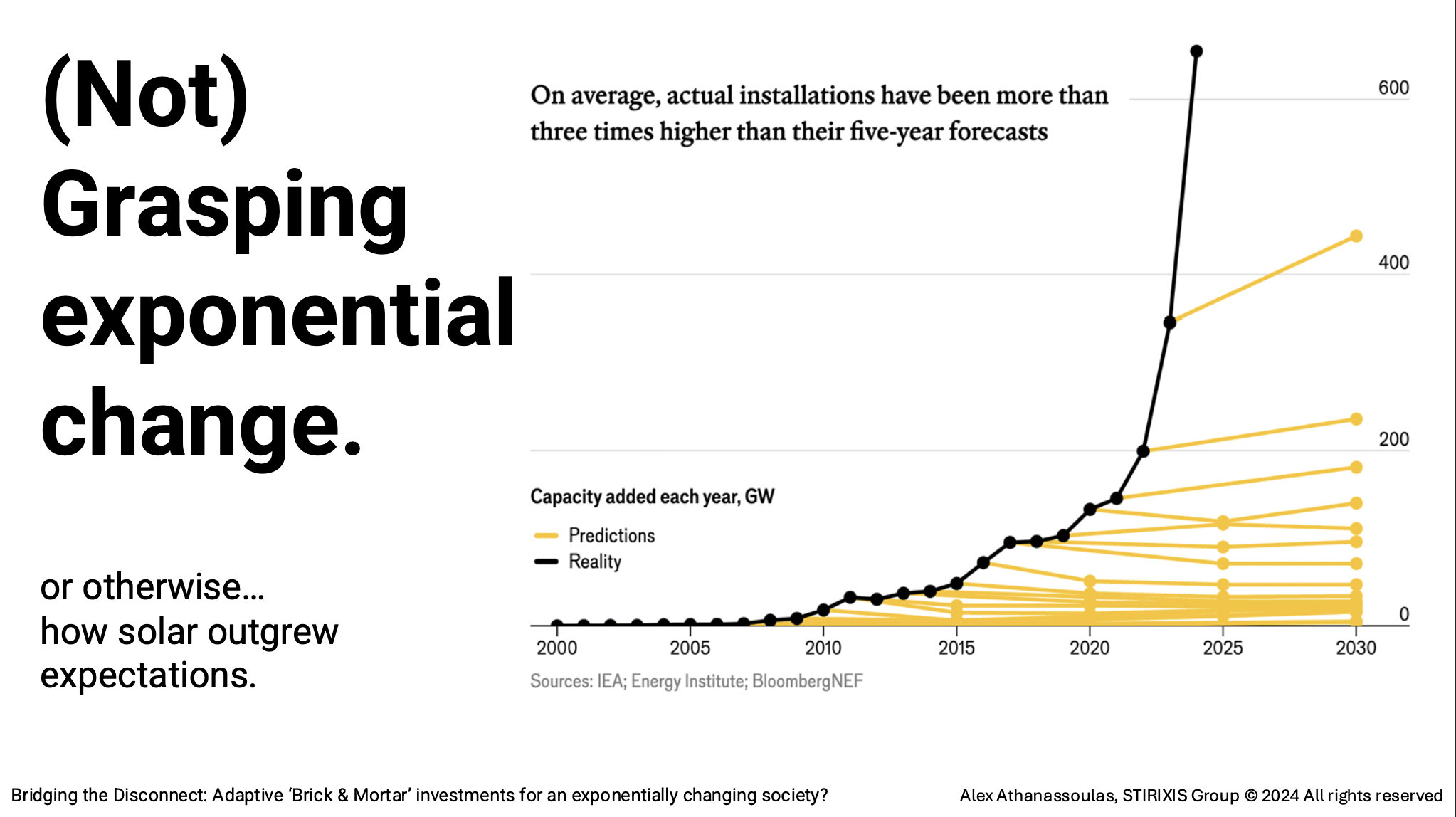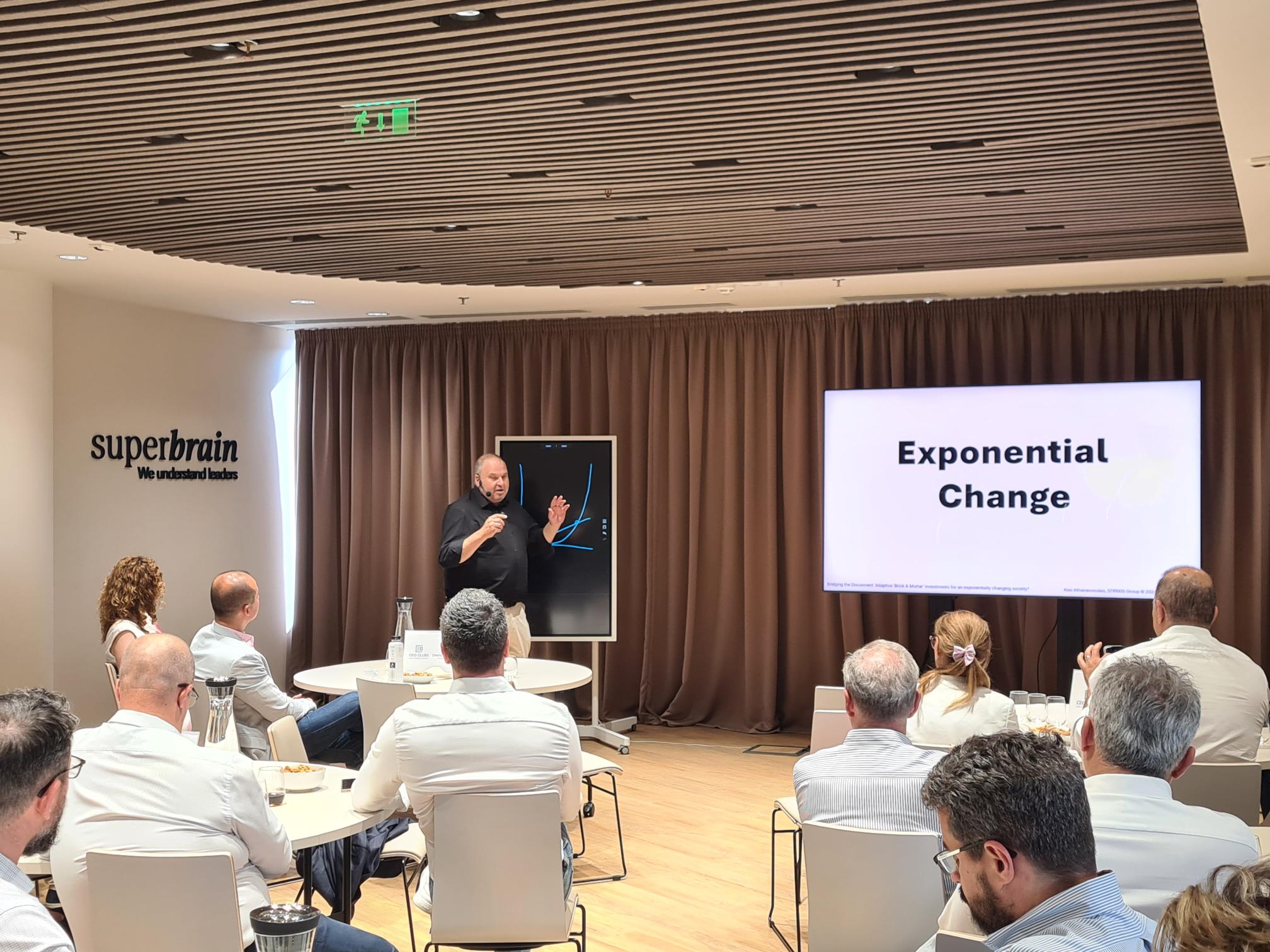Bridging the Disconnect: Adaptive ‘Brick & Mortar’ Investments for an Exponentially Changing Society
In today’s rapidly evolving landscape, the traditional retail and office environments face unprecedented challenges. As a strategic foresight expert, my recent presentation highlighted the critical need for adaptive brick-and-mortar investments. Here are three key lessons from the presentation that every business should keep in mind:
1. Embrace Exponential Change
Our world is changing at an exponential rate, and businesses must adapt to survive. Historical timelines show that the pace of change has accelerated dramatically:
- 1,800,000 years to 12,000 years: The transition from early human societies to the advent of agriculture.
-12,000 years to 200 years: The shift from agricultural to industrial societies.
-200 years to now: Rapid technological advancements and the digital age.
This acceleration necessitates a proactive approach to innovation. For example, the solar energy sector's growth outpaced all expectations, showcasing the potential of exponential change. Businesses must continually innovate and adopt new technologies to stay competitive. This involves not just keeping up with current trends but anticipating future shifts and being ready to pivot as needed.

2. Reimagine Retail and Office Spaces
Proactivity in innovation was a key lesson that COVID-19 taught us in relation to retail and workplace design. We saw overnight the models of both industries change. But these changes were not unpredictable. In fact, at STIRIXIS Group, we had been urging clients to change their workplace strategy to include hybrid work, to adopt technologies that will enable connectivity and security from home and to start moving towards the 'future of work'. Yet, many, only embraced these models when it was absolutely necessary, losing valuable money and time, amongst other things (such as the ability to protect employees from sudden changes that hurt productivity, wellbeing and require and adaptation period).
The evolution of retail and office environments over the past century underscores the need for adaptive strategies. Traditional models are no longer sufficient; instead, businesses must create spaces that cater to modern needs and preferences:
By embracing the principles of exponential change, businesses can better anticipate and adapt to the evolving needs of consumers and employees. Retailers should create immersive environments that attract customers through unique experiences, while office spaces should support both collaborative and remote work, adapting to the changing needs of the workforce.
In the 1940s, retail was characterized by standalone stores and department stores that catered to local communities. The rise of shopping malls brought a new dimension to retail in the 70s, offering consumers a one-stop shopping experience. But today's retail environment differs a lot. It emphasizes experiential outlets where customers seek unique, engaging experiences rather than mere transactions. For instance, Apple Stores provide not just products but also a space for learning and community interaction.
Similarly, offices have changed dramatically. In the 1950s, cubicles and open-plan offices were standard practice, but now the modern office is dynamic, flexible, personalized to different workstyles and needs. With the rise of remote work, businesses are also investing in the social office: a space that fosters collaboration, community, comfort and productivity.
3. It's all Connected: Adopt Systems Thinking for Sustainability
Systems thinking is essential for creating sustainable and resilient business models. This approach considers the interconnectedness of various factors affecting the business environment:
- Sustainability: Businesses must integrate sustainable practices into their operations, ensuring long-term viability and environmental stewardship.
- Density and Urban Planning: Concepts like 15-minute cities emphasize the importance of localizing services to reduce travel time and enhance community engagement.
- Technological Integration: Preparing for and incorporating advanced technologies is crucial for staying competitive and relevant.
Adapting to these changes requires a holistic approach, where businesses anticipate future trends and prepare accordingly. By embracing systems thinking, companies can create environments that not only meet current needs but also evolve with future demands.
Businesses must recognize the rapid pace of change, reimagine their physical spaces, and adopt systems thinking for sustainability. By doing so, they can bridge the disconnect between traditional brick-and-mortar investments and the needs of an exponentially changing society. For more insights and detailed strategies, connect with us at STIRIXIS Group. Together, we can design ecosystems that contribute to your True Prosperity.

